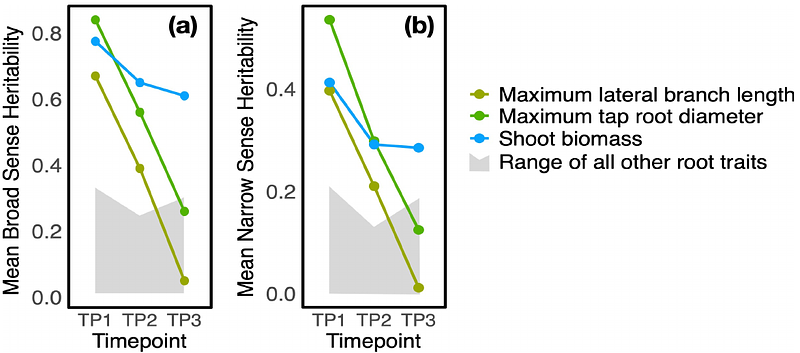Divergence of root system traits in soybean between breeding and diversity lines

Divergence of root system traits in soybean between breeding and diversity lines
Bogati, S.; Carpenter, J.; Jung, J.; Schafer, S. E.; Danao, J.; Woods, E.; Song, Q.; kantar, M.; Ma, J.; Wang, D. R.
AbstractRoots are critical for supporting basic plant functions such as anchoring in various substrates, uptake of water and nutrients, and hosting symbiotic relationships. In crops, indirect changes to root system architecture (RSA) have occurred largely as a result of selection for yield or other related aboveground traits. In cultivated soybean (Glycine max), evidence of changes to RSA resulting from breeding for crop performance has been inconsistent, with some studies supporting an overall decrease in performance related trait values, such as root length and density, and other work showing the opposite. The current study sets out to ask whether there is any systematic differentiation in RSA between a set of elite breeding lines (n=8) of soybean developed for the Midwest United States and a group of biogeographically diverse landraces from the USDA Soybean Germplasm Collection (n=16. Groups are compared across three distinct developmental stages (V2 to V6, V7 to R2, R3 to R7) and two contrasting soil environments. In total, 432 root systems were phenotyped for 12 structural traits derived from 2D images along with root and shoot biomass. A new 3D root modeling approach leveraging photogrammetry derived pointclouds is additionally tested on a subset of 38 contrasting root systems. Results indicate that the diversity lines had smaller root systems overall but greater phenotypic plasticity in response to soil environment as compared to breeding lines. Additionally, the study finds evidence for trade-offs between above-ground and below-ground trait plasticity.